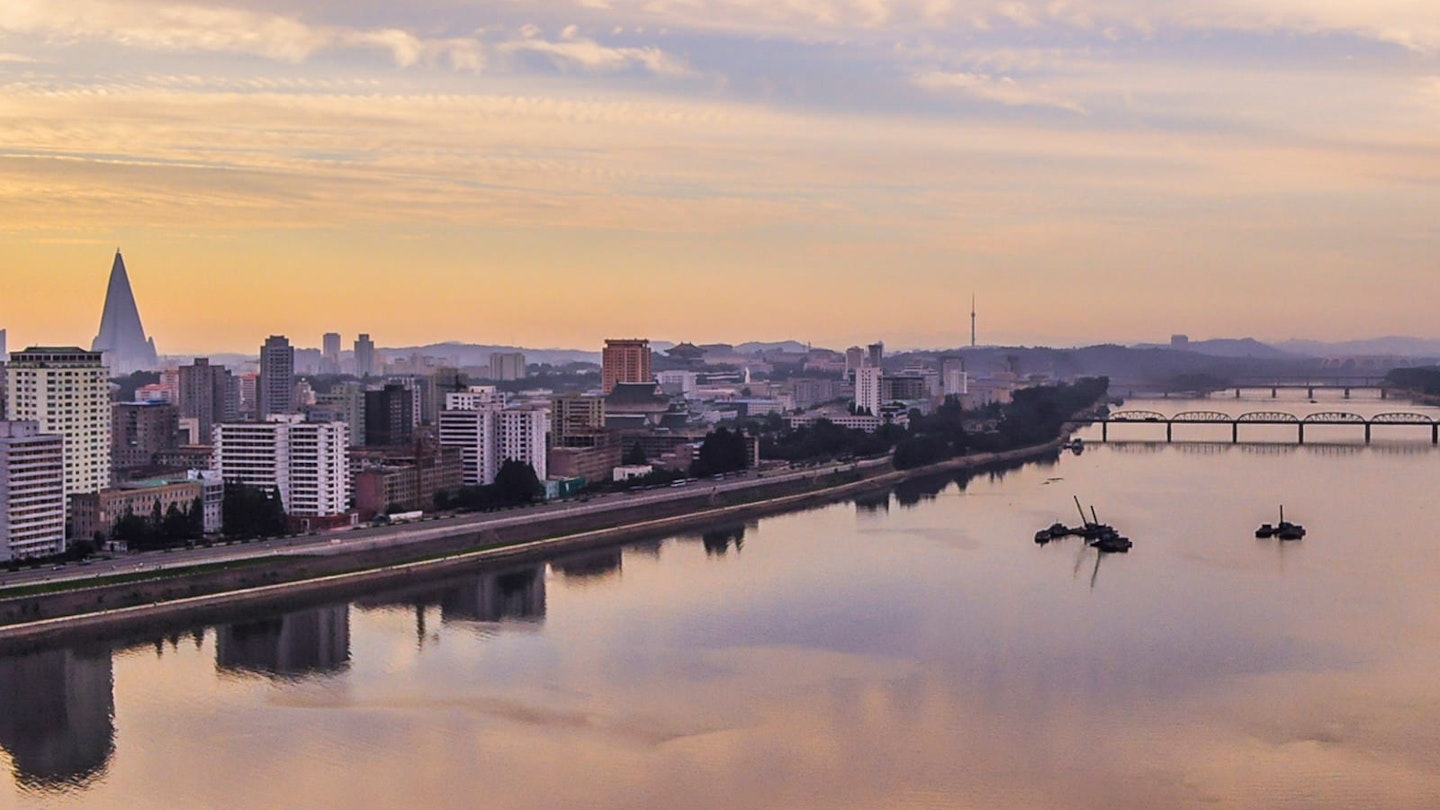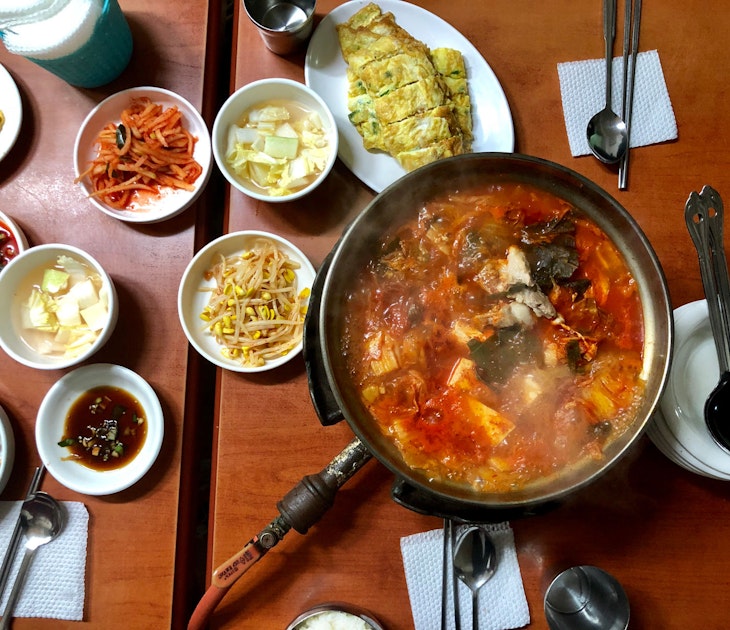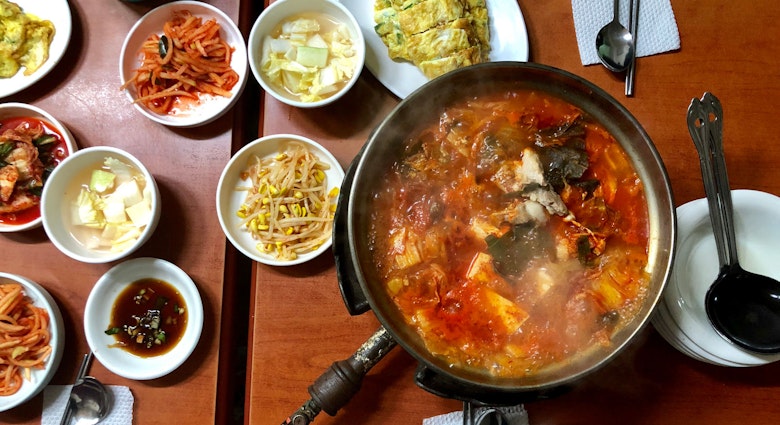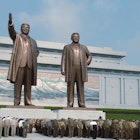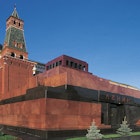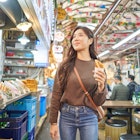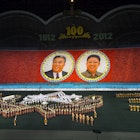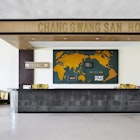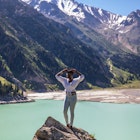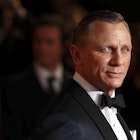It may not be high on many people's list of architectural odysseys, but Pyongyang (translated as 'Flat Land') – the capital of North Korea – offers one of the world's most monumental experiences, particularly if immense Socialist Realist monuments interest you.
There's no such thing as wandering on a whim in Pyongyang – all visitors are constantly accompanied by their state-appointed guides, and photography is heavily restricted. It’s essential to accept that you’ll have no independence during your trip – and you'll hear a one-sided view of history. Those who can accept these terms, and feel that the benefits of opening North Korea up to outside eyes outweigh the problems of travel dollars feeding the police state's coffers, will have a fascinating trip into another rather unsettling world, a reclusive city of some 2.5 million people that has almost as many modernist concrete wonders.
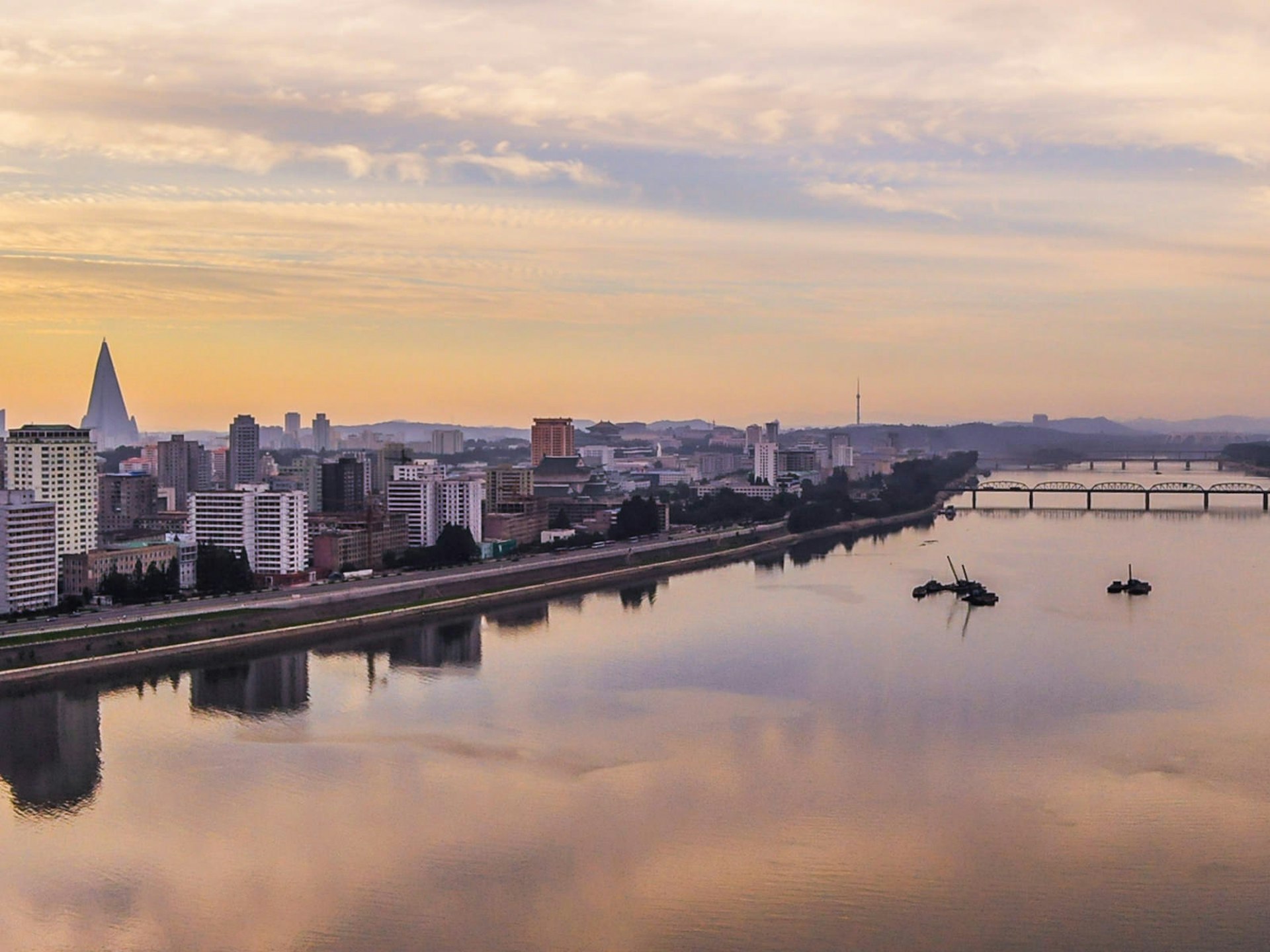
There are plenty of sanctioned sights to see amid the Soviet-style tower blocks and wide empty boulevards that characterise this strange city suspended in its own bubble of Communist-era time.
Perhaps the most eponymous structure in the city is the immense, mirror-windowed, roughly conical Ryugyong Hotel, towering 330 metres high and comprising 105 floors. Originally planned for completion in time for the 1989 World Festival of Youth and Students (whose motto ran 'For Anti-Imperialist Solidarity, Peace and Friendship'), dwindling national finances saw the massive place stand windowless and vacant for more than a decade. Building of this bizarre concrete palace resumed in 2008 courtesy of an Egyptian-led construction project, but remains unopened. If ever finished, plans call for several thousand guest rooms and five revolving restaurants.
Next, no tour group to the city leaves Pyongyang without a good long look at the Mansudae Grand Monument, a huge bronze rendition of the late founder of North Korea, Kim Il-sung, unveiled to commemorate his 60th birthday. Beware, however, if you blanch at the notion of prostration, that all visitors are expected to lay flowers and bow at those big bronze feet. Not one to scrimp on birthday gifts to himself, you must see the 'Eternal President's' 70th birthday present, the 170m high Tower of the Juche Idea (a nod to the late leader's Juche philosophy, the lynchpin for the country's Communist ideals). It's a granite edifice built of 25,500 stone blocks – one for every day of the leader's 70 years – but it does offer great views from its pinnacle out over the city.
Moving on across the Taedong River, stop off at the huge, eerily empty Kim Il-sung Square (think Mexico City's Zocalo with an Orwellian twist), to visit the vast Grand People's Study House, a library housing several million books and with a nifty conveyor-belt system to bring your choice of Communist tome straight to your table.
From here, stop for lunch atop the soaring TV tower, then check out the world's largest Triumphal Arch – 3m taller than Paris's own – and two of the world's largest stadiums (where North Korea's famous Mass Games are regularly held) before heading out 12km from the city centre to the Kim Il-sung Birthplace at Mangyongdae. Here you'll find a collection of (questionably authentic) traditional huts painting a picture of the deceased founder of the country as a man of humble origins. There's also a funfair, complete with rollercoaster. Yep, a funfair.
To experience the opposite end of the Great Leader's story, try to arrange a visit to the city's huge Kumsusan Memorial Palace, his immense domicile in life and these days his eternal resting place, with his embalmed body available to notables for special viewing on the top floor. Even if you can't catch a glimpse of him in the (embalmed) flesh, it's okay - the Towers of Immortality scattered about the city remind you that 'The Great Leader Comrade Kim Il-sung will always be with us'.
Finally, head back to one of the state-sanctioned hotels in the city, where you're likely to experience yet more Communist concrete and artwork. Opt for the Koryo Hotel if you've a penchant for revolving restaurants (there's one on either 1980s-era bronze coloured tower), or the towering Yanggakdo marooned on its own island mid-river. Relax, put your feet up and prepare for more edification – perhaps in the form of the genuinely gripping Victorious Fatherland Liberation War Museum – in the morning.
This article was updated in October 2017.
